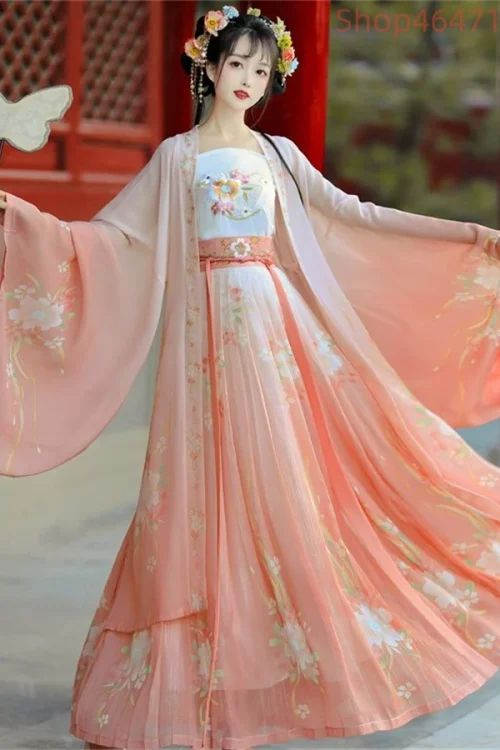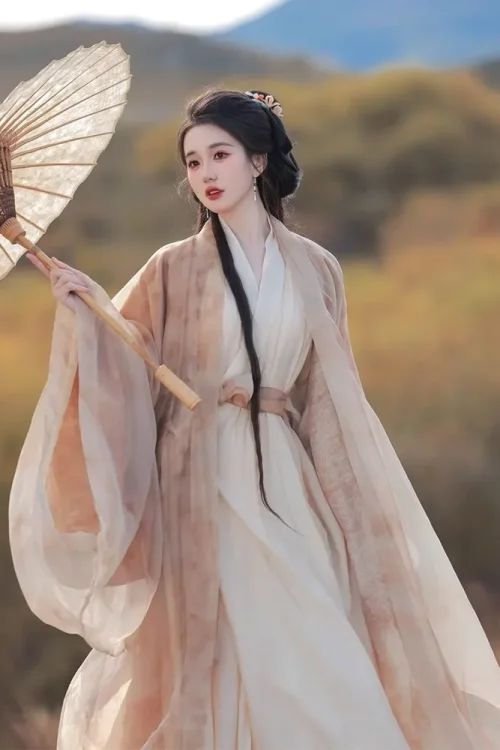Modernizing the Bat Pattern on Hanfu: Incorporating Contemporary Elements
The bat pattern, a traditional Chinese motif symbolizing good fortune and longevity, has adorned Hanfu, the traditional Chinese clothing, for centuries. However, in recent years, there has been a growing desire to modernize this classic design to appeal to contemporary tastes.

Experimenting with Contemporary Colors and Fabrics
One approach to modernization is to incorporate contemporary colors and fabrics. Traditional bat patterns often feature red, gold, and black, but modern designers are experimenting with a wider palette, including pastels, metallics, and even neon hues. Similarly, while silk and brocade were once the preferred fabrics for Hanfu, modern designers are using more innovative materials such as organza, lace, and even denim.
Playing with Scale and Placement
Another way to modernize the bat pattern is to play with its scale and placement. Traditional bat patterns are typically large and symmetrical, but modern designers are creating smaller, more asymmetrical designs. They are also experimenting with placing the bats in unexpected locations, such as on the sleeves or hemline.
Reinterpreting Symbolism
In addition to these visual changes, modern designers are also exploring new ways to interpret the bat pattern’s symbolism. While the traditional bat represents good fortune, modern designers are using it to convey a variety of messages, such as hope, resilience, and individuality.
Example: Guo Pei and Vivienne Tam’s Innovations
One notable example of modernizing the bat pattern is the work of Chinese designer Guo Pei. In her 2015 collection, she featured a stunning gown with a bat pattern embroidered in gold thread on a sheer organza fabric. The gown was a departure from traditional Hanfu, but it captured the essence of the bat pattern while adding a touch of contemporary glamour.
Another example is the work of Chinese-American designer Vivienne Tam. In her 2018 collection, she incorporated the bat pattern into a series of streetwear pieces, such as hoodies and bomber jackets. By combining traditional Chinese motifs with modern silhouettes, Tam created a unique and eye-catching collection that appealed to a global audience.
Continuing the Legacy
The modernization of the bat pattern on Hanfu is a testament to the enduring appeal of traditional Chinese culture. By incorporating contemporary elements, modern designers are ensuring that this classic motif remains relevant and meaningful for generations to come.
Reimagining the Bat Pattern: A Fusion of Tradition and Innovation
The bat pattern, an iconic motif in Hanfu, the traditional Chinese attire, has captivated generations with its intricate designs and auspicious symbolism. However, as Hanfu experiences a resurgence in popularity, designers are seeking innovative ways to modernize this timeless pattern while preserving its cultural significance.

Contemporary Fabrics and Colors
One approach is to incorporate contemporary elements into the bat pattern. By using modern fabrics, such as silk blends or lace, designers can create a more ethereal and sophisticated look. Additionally, experimenting with unconventional colors, such as pastels or metallics, can add a touch of modernity while maintaining the pattern’s essence.
Reinterpreting the Bat’s Form
Another strategy is to reinterpret the bat’s shape and form. Instead of the traditional symmetrical design, designers can explore asymmetrical or abstract variations. By breaking away from the conventional silhouette, they can create a more dynamic and visually striking pattern.
Scale and Placement
Furthermore, designers are experimenting with the scale and placement of the bat pattern. By enlarging or reducing the size of the motifs, they can create a bolder or more subtle effect. Similarly, by placing the bats in unexpected locations, such as the sleeves or hemline, they can add a touch of whimsy and originality.
Fusion of Traditional and Western Elements
In addition to these design techniques, designers are also exploring new ways to incorporate the bat pattern into contemporary garments. By combining it with other traditional Chinese motifs, such as clouds or dragons, they can create a harmonious and visually appealing ensemble. Alternatively, they can fuse the bat pattern with Western elements, such as lace or embroidery, to create a unique and eclectic style.
A Testament to Tradition and Innovation
The modernization of the bat pattern on Hanfu is a testament to the enduring appeal of traditional Chinese culture. By embracing innovation while respecting tradition, designers are creating a new generation of Hanfu that is both stylish and meaningful. As the bat pattern continues to evolve, it will undoubtedly remain a symbol of auspiciousness and cultural heritage for generations to come.
The Evolution of the Bat Pattern: From Ancient Symbolism to Modern Aesthetics
The bat pattern, an enduring motif in Chinese culture, has adorned Hanfu, the traditional Chinese garment, for centuries. However, as fashion evolves, so too must the interpretation of this ancient symbol. Modernizing the bat pattern on Hanfu requires a delicate balance between preserving its cultural significance and embracing contemporary aesthetics.

Blending Traditional Shapes with Modern Materials
One approach is to retain the traditional silhouette of the bat while incorporating modern design elements. For instance, designers can experiment with different fabrics, such as sheer organza or metallic brocade, to create a more ethereal or opulent look. Additionally, they can add intricate embroidery or beading to enhance the visual appeal of the pattern.
Modern Symbolism
Another strategy is to reinterpret the bat’s symbolism in a contemporary context. Traditionally, bats represent good fortune and longevity. Modern designers can draw inspiration from these concepts to create patterns that evoke similar sentiments. For example, they can use stylized bat motifs to symbolize prosperity or incorporate them into designs that celebrate life’s milestones.

Exploring Color Variations
Designers can also explore the use of color to modernize the bat pattern. While traditional Hanfu often featured bats in black or red, contemporary designers can experiment with a wider palette. Pastel shades, such as lavender or mint green, can lend a fresh and youthful touch to the pattern. Alternatively, bold colors, such as cobalt blue or emerald green, can create a more striking and modern look.
Functional Design for Modern Use
In addition to visual aesthetics, designers should also consider the functionality of the bat pattern on Hanfu. Modern Hanfu is often worn for both formal and casual occasions. Therefore, it is important to create patterns that are versatile and can be adapted to different settings. For example, a subtle bat motif embroidered on a silk blouse can be appropriate for a formal event, while a larger, more colorful bat pattern on a cotton dress can be suitable for everyday wear.
Balancing Tradition and Modernity
By embracing these strategies, designers can successfully modernize the bat pattern on Hanfu while preserving its cultural significance. This approach allows for the creation of garments that are both stylish and respectful of tradition, ensuring that the bat pattern continues to adorn Hanfu for generations to come.
